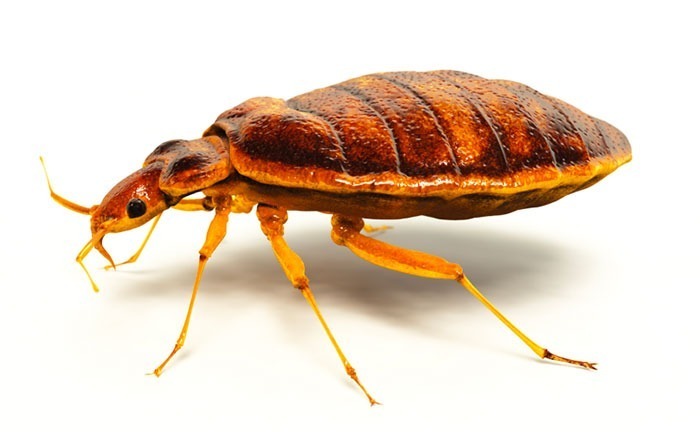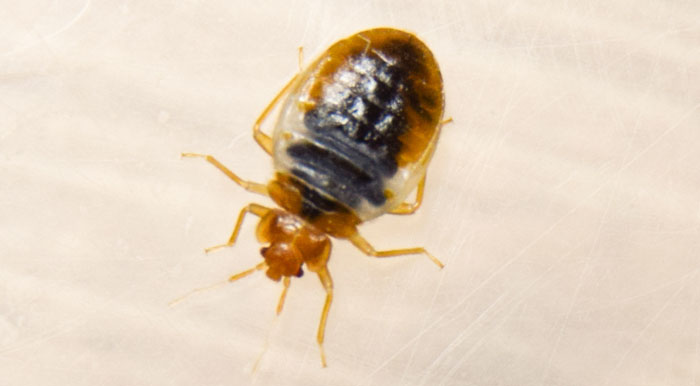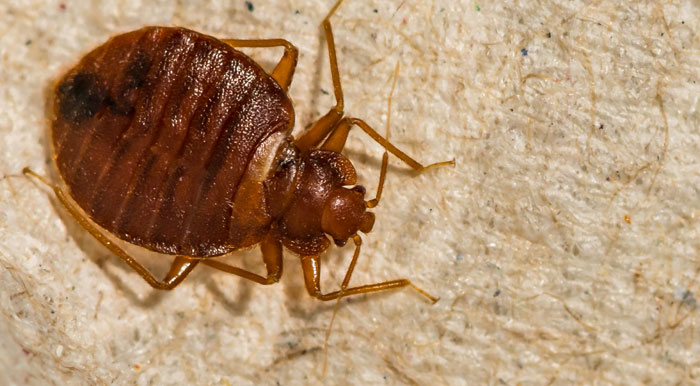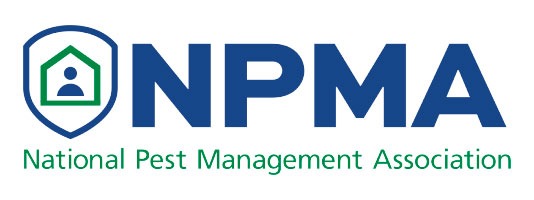
Bed bugs are “true bugs” belonging to the order Hemiptera, family Cimicidae. They are distinguished by their mouthparts, which exist for the purpose of accessing their food source: the blood of warm-blooded mammals, including humans. Their name is derived partly from their mode of travel – latching onto beds, clothing, shoes bags and more – and their behavior of feeding on humans as they sleep.
They are small insects. They are oval, have six legs, antennae and even though they have wings they cannot fly. Nymphs are cream or clear and not visible to the naked eye. Adult bed bugs grow only to ¼ inch, similar to the size of an apple seed. Adult bed bugs are dark brown, which turns to reddish-brown when engorged.
Out of the 90 bed bug species there are only two main types of bed bugs that feed on humans and can be found on all continents:
- Common Bed Bug (Cimex lectularius)
- Tropical Bed Bug (Cimex hemipterus)
The Bat Bug (Leptocimex Boueti or Cimex Adjunctus) is most prevalent in west Africa and South America but is also found in Pennsylvania and midwestern states. Belonging to the same family Cimicidae, it is often mistaken for a species of bed bug.
The only type of bed bug that can be found in Pennsylvania is the Common bed bug.
Types of Bed Bugs in Pennsylvania, New Jersey and Delaware

Common Bed Bug
(Cimex lectularius)
The Common bed bug earns its name by being the most commonly found bed bug across the globe, including our region of the United States. It was introduced to North America in the 1990’s. This type of bed bug feeds primarily on humans but is also known to feed on dogs, cats, birds and rodents if the need arises.

Tropical Bed Bug
(Cimex hemipterus)
The Tropical bed bug has all of the same characteristics of the Common bed bug, except for its preferred location. This bed bug is most commonly found in the tropics of Africa, Asia and South America. It has also been sighted in temperate climates like Florida and California.
Signs of an Infestation
The primary signs of a bed bug infestation are a result of their nocturnal feeding behavior.
- Bite marks on humans – these are small, red marks that can appear in a zig zag pattern
- Blood stains on bedding (sheets, pillowcases), furniture or carpets
- Dark or rust colored spots and stains from bed bug excrement
- Bed bug egg shells or molted skins
- Foul odor from the bed bug’s scent glands
Contrary to how having a bed bug infestation can make you feel, they are only seeking a food source. A bed bug infestation is no indication of your home’s cleanliness.
Health and Damage Considerations
Bed bugs are considered nuisance bugs because they are difficult to control.
Even though their bites can be painful they do not transmit diseases. The presence of bed bugs and their bites do take their toll humans, with the potential to cause the following:
- Allergic reactions
- Secondary bacterial infections (impetigo, ecthyma and lymphangitis)
- Anxiety
- Insomnia
When bitten, the bed bug bites will not itch right away due to the anesthetic quality of their saliva. These bites will heal within one to two weeks.
Behavior
Bed bugs are nocturnal, hiding during the day. When they come out at night to feed, they will be scared away by movement and light.
They locate their human host using cues provided by warmth, scent and carbon dioxide. Bed bugs will target exposed areas of skin such as the face, arms, hands and the neck.
Bed bugs have the ability to crawl quickly across short distances and spread quickly throughout a home once introduced via clothing, luggage or other host materials.
Habitat
Bed bugs are a challenge to control because they thrive in most any environment, from subzero temperatures to heat up to 120 degrees Fahrenheit.
They can be found anywhere they can live undetected. During an infestation that includes in mattresses (including the seams and inside the mattress coils), bed frames, furniture, door and window frames, dressers, behind picture frames, and beyond.
Lifecycle
The bed bug metamorphosis has three stages: egg, nymph and adult. The female bed bug lays eggs every day, up to 500 throughout her lifetime. Eggs are laid in cracks and crevices in walls as well as in floors, beds and on furniture. After about 14 days nymphs will emerge from the eggs. The nymphs will go through five instar stages over the course of 20 to 35 days before reaching adulthood. Bed bugs will live up to one year.
Feeding
Bed bugs feed on blood. They prefer human blood but are known to feed on dogs, cats or birds. Bed bug nymphs require regular feeding to fully develop into an adult. Adult bed bugs will seek a meal every four or five days but they can survive for weeks at a time, even a year, without feeding.





